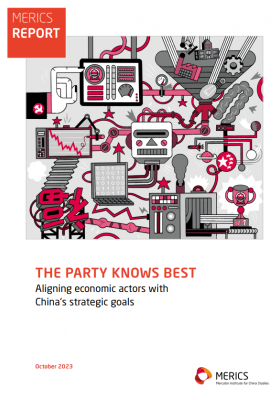

US swings boldly to block China’s AI progress, with fallout for other countries
AI export quotas will divide the world into the good, the bad and those forced to choose sides, say Antonia Hmaidi and Wendy Chang. The US is trying to control the technology while it still can – even though its AI needs fewer of them, China’s DeepSeek still relies on US-made chips.
US plans to better control “AI diffusion” by imposing a sweeping export quota scheme across the world have met with deep skepticism from other countries and the tech industry. But there are signs of a Washington consensus that this is a price worth paying to prevent China from obtaining advanced AI for military uses – and to secure US leadership by tipping the scale for new AI infrastructure to be built at home: Donald Trump reversed several Biden-era executive orders, including one on AI safety, but has not touched the AI diffusion framework.
The rules divide the world into three “tiers” – the US and 18 key partners, in Tier 1, will face no restrictions on buying US-made advanced AI chips; China, Russia and other arms-embargoed countries, in Tier 3, will still be barred from buying them; all other countries will fall into the second tier and face purchasing quotas. This all smacks of Cold War thinking – dividing the world into blocs, elevating AI to the status of strategic weapons whose stockpiles need to be controlled. The US is taking these steps while it still holds most of the cards. Nvidia dominates the high-end chip market, while its Chinese rivals struggle to catch up. And Chinese start-up DeepSeek may have shaken the tech world by presenting AI technology that can do with less computing power – but it still relies on advanced chips from the US giant.
The US is moving from specific entities and end-uses to country-wide caps on AI purchases
In addition to blocking China’s access to AI, the new rules also aim to strengthen the US’s position in the field. The new administration still has time to make changes, but the framework’s obvious compatibility with Trump’s “America first” approach suggests it will stick with an instrument that promises to be as effective as it will be blunt. The new rules will give Washington oversight of all or significant transactions involving AI-capable chips, with the national caps discouraging countries from selling from their limited supply to China. This approach marks a major shift in how the US will seek to cut off Chinese access – from specific entities and end-uses to country-wide caps on AI purchases.
Trump’s first administration opened the “tech war” in 2018 by placing Chinese tech companies like Huawei on the Entity List of organizations subject to US export controls. And the Biden administration in 2022 followed up with China-wide end-use controls on certain chips, as well as much tighter controls on “designated entities”. But this strategy had mixed results, as targeted Chinese companies found ways to circumvent the controls by obfuscating the intended end-use or end-user. They were able to obtain chips and chip-manufacturing equipment by using non-designated entities and third countries – a loophole that the export quotas for the 120 or so Tier 2 countries now seek to close.
Following on from earlier moves targeting the sale of chips and the equipment used to make them, these new rules are also designed to prevent China from accessing AI chips deployed outside its borders. Foreign cloud services offering advanced AI were an easy way for Chinese companies to continue using the technology. Washington now plans to tighten the requirements for existing know-your-customer schemes, require US cloud providers to deploy at least 50% of their computing power in the US, and limit access to non-trusted countries. Foreign data center operators that join a new verified end-user system and share information will in return get to buy more advanced US chips.
The new framework will force some countries and companies to choose sides
The new framework will force Tier 2 countries and companies to choose sides: live with the restrictions on US AI technology, or to join the US and its allies in their campaign against China’s tech ambitions. Countries and companies in this tier that agree to abide by equivalent export controls and due diligence to ensure that US AI technology does not get diverted to China will, in return, receive a higher cap on the number of US chips they can buy. As with nuclear technology during the Cold War, the US will no longer entrust AI computing power to countries that do not play by US rules.
This expansion of US extraterritorial control has not gone down well in the European Union, as it has split the region into 10 Tier 1 countries exempt from any quotas, starting with Germany and France, and 17 Tier 2 countries that face restrictions. This challenges the European single market and the geography of its computing infrastructure. For example, a cloud provider serving customers in Tier 2 Austria could be tempted to locate its data centers in Germany, where it would not need a permit. While the national quotas are high enough to make little difference in the short run, the unilateral imposition of these rules has created bad feeling many European capitals.
The rules against “AI diffusion” equate preventing China from accessing advanced technology with ensuring that the US continues to call the shots in AI. Western allies also want to limit China’s military build-up – but few buy into Washington’s claim to AI hegemony. As countries around the world will unlikely be convinced by Trump’s “America first” approach and Washington’s continued blurring of national security, economic security and competitiveness. But until China (or another country) can supply the world with high-end AI chips, they will have no choice but to play by US rules.
This article was first published by China.Table on February 12, 2025.

